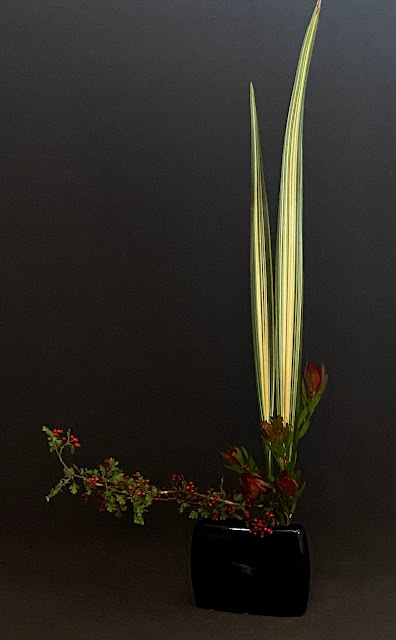Hello all,
I was quite delighted to make the simple, little arrangement, above but not for the reasons you might think. The gloriosa lily is the result of a little experiment I undertook some weeks ago. As you probably already know, I grow these plants quite successfully. When the plants in pots were starting to flower, I discovered three tubers that I had forgotten to plant. Either that or I had run out of pots. I decided to plant them despite the fact that it was a couple of months later than it is recommended to plant them. The result was that two of the tubers did nothing but the third grew and has produced four buds. Above is the first flower. From now on I will stagger the planting to extend their flowering period.
My regular readers will remember my complaints about my wisteria producing very few flowers. I threatened to have her removed more than once. However, I have learnt recently that they require pruning twice a year. So, really, it was my bad! One of the pruning times is early autumn. With secateurs in hand I went out and spent an entire afternoon pruning. This, of course, produced masses of potential material for ikebana. Below is one arrangement using the wisteria vine without the leaves. For flowers I used two of my remaining hydrangeas.
The belladonna lilies tend to all flower at once and, because I can't bear to let them die in the garden, I cut them and arrange them. I used three flower heads in the arrangement, below. The golden elm stem is one piece with the larger hanging stem in front and a smaller one at the back. You have to take my word for it that there is lovely space between them.
I'm a little short on content this week because Lucy and I have been preparing for our exhibit at the Melbourne International Flower and Garden Show (MIFGS). We are part of the Ikebana International Melbourne exhibition space. There will be five schools represented and we will be doing the Sogetsu installation. On Wednesday 29th March at 10.30 there will be an informal meeting in front of our site (C18). And, of course, if you are at the show around that time, please come by and say hello.
Bye for now,
Emily
































